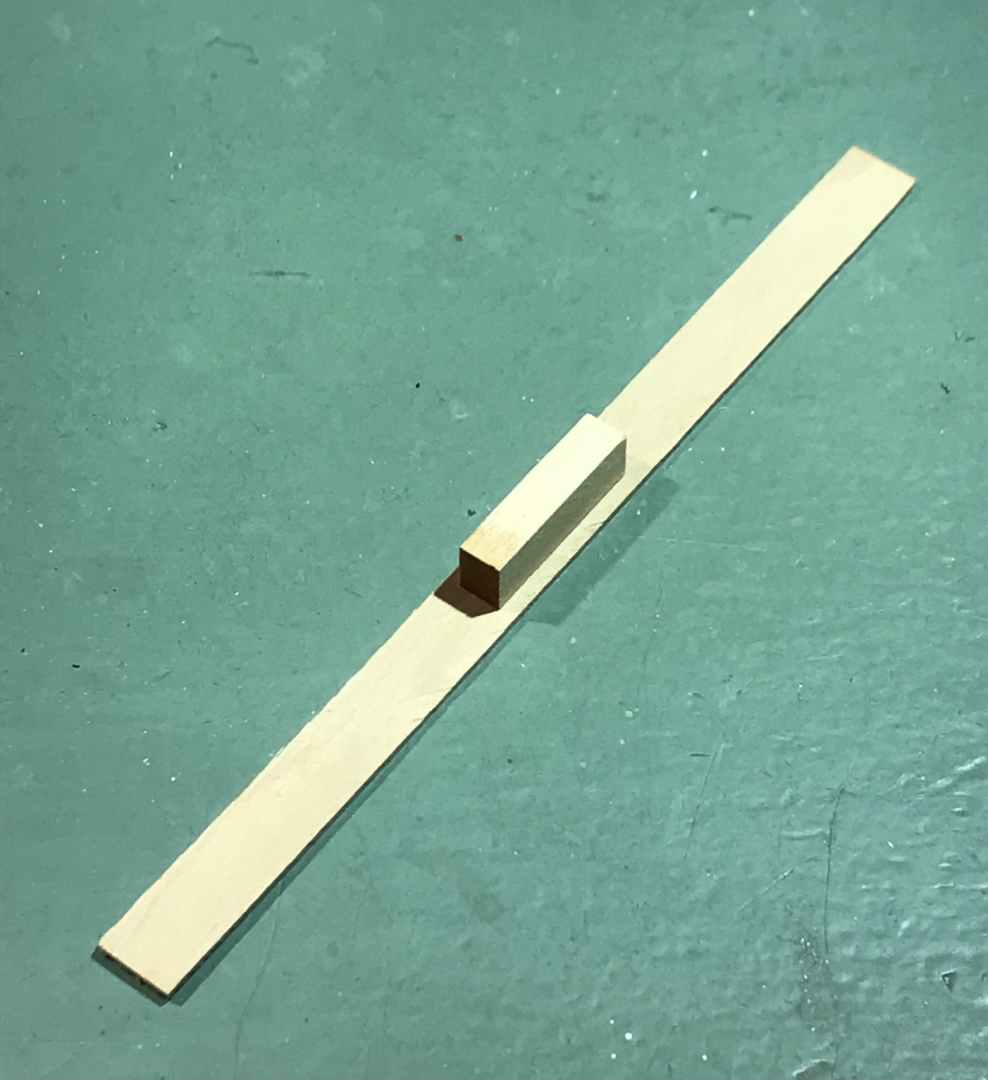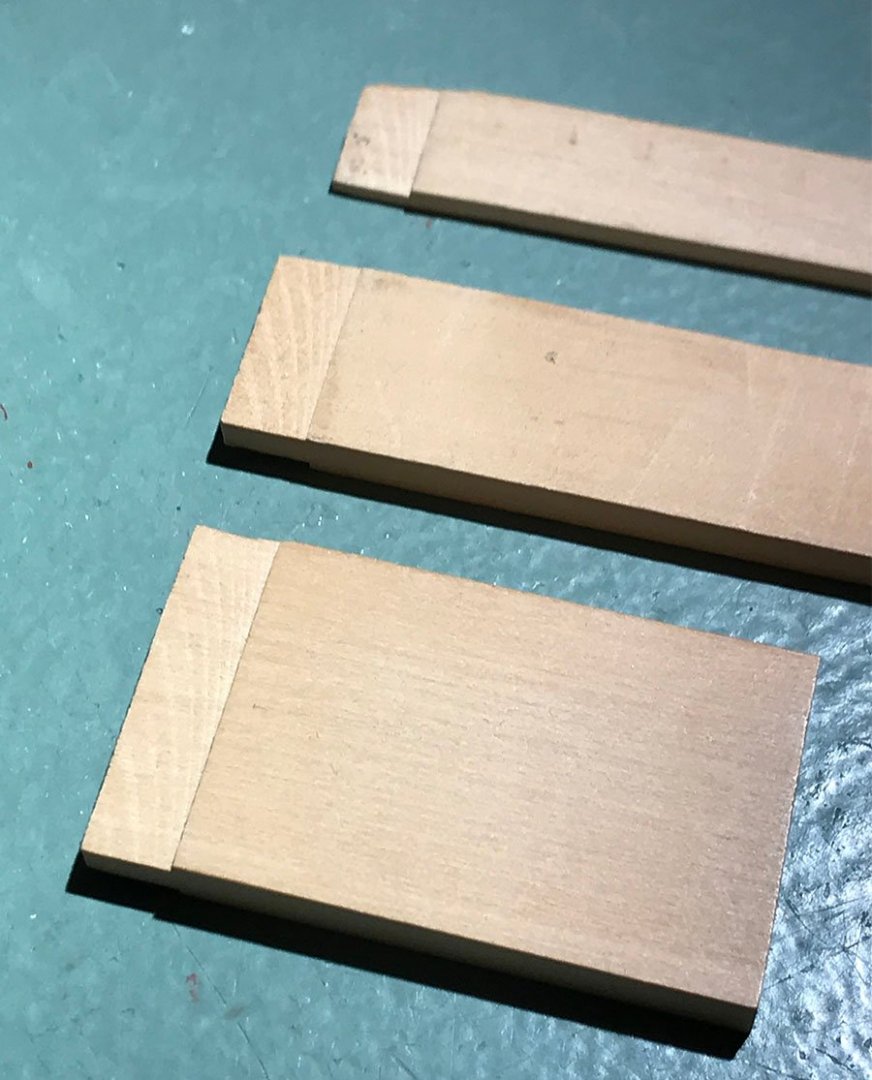-
Posts
13,374 -
Joined
-
Last visited
Content Type
Profiles
Forums
Gallery
Events
Everything posted by druxey
-
I suppose that the wood specie you are using is the issue. You need a dense wood such as pear or Castillo for such items.
-
If you look at the frame pattern, you will see the slot for the deadwood. There are two lines across the top of the slot. The solid line is the fore edge of the frane pair and the dashed line indicates the bevel to allow the frame to sit at the correct height. Does that solve your problem?
- 30 replies
-

Making Knees
druxey replied to Don Case's topic in Building, Framing, Planking and plating a ships hull and deck
Run the grain diagonally so that neither arm is cross-grained. -

Swan-Class Sloop by Stuglo - FINISHED - 1:48
druxey replied to stuglo's topic in - Build logs for subjects built 1751 - 1800
Not too long or too wide, either!- 475 replies
-
I'm trying to understand what went amiss here. Was the last cant frame a little high or the the first square frame a bit low to cause the disparity? Another possibility is that the inner surfaces of the cant frames needed more fairing. The way to determine this is to check the thickness of the last cant at various points and compare with the thickness of the dead flat pattern at her same points along the frame.
- 30 replies
-

Stitching sails with sewing machine
druxey replied to Jorge Hedges's topic in Masting, rigging and sails
Yes, water is used to dilute acrylic paints, mediums and varnishes. -

Swan-Class Sloop by Stuglo - FINISHED - 1:48
druxey replied to stuglo's topic in - Build logs for subjects built 1751 - 1800
Here is an example of sanding stick: The sandpaper is rubber-cemented on the lower side of the thin, flexible batten, so is easily replaced.- 475 replies
-
I'm afraid I have to contradict you. Look at this contemporary plan of a vessel with considerable drag: https://collections.rmg.co.uk/collections/objects/85907.html As you can see, the frames are at right angles to the keel, not the waterline. There are many other similar archival examples. This is not unique.
-
Love the capsquares! Beautiful work, Marsalv.
- 589 replies
-
- le gros ventre
- cargo
-
(and 1 more)
Tagged with:
-
I've never seen a pantograph as sophisticated as the one above. A beautiful bit of kit.
-
Sweet! Too bad part of the railing is hidden below deck.
-

Swan-Class Sloop by Stuglo - FINISHED - 1:48
druxey replied to stuglo's topic in - Build logs for subjects built 1751 - 1800
I find flexible wood sanding sticks with a small handle helpful for inner fairing, other than at the extreme ends of the hull. Starting to look good inside, Stuglo!- 475 replies
-
Yeah, it's called 'covid brain'. Either that or advancing years.... In my case, I prefer the first explanation. Nice to see you back, on the job, Clare!
- 175 replies
-
- hanse kogge
- shipyard
-
(and 1 more)
Tagged with:
-
A pantograph is a rather difficult tool to use in practice. You need to have an extremely steady hand on the tracing point, sufficient weight on the pencil point for it to mark properly and a solid mounting on your drafting table. It was useful, I suppose, in the days before scanners and digital enlargement, but I'd scan and (in your case) reduce and print out what you need.
-

Deadwood
druxey replied to Don Case's topic in Building, Framing, Planking and plating a ships hull and deck
I agree with Allan on the slightly decorative upper end of the backing piece. -
When i was very young, I wrote to Rabone and asked for any rejects from them for my models. Not only did the kid get an answer, the man at the company actually sent me a complimentary package of blanks! They were, looking back, definitely Castello. boxwood. It's lovely to work, except the odd piece can be brittle, so don't turn down using it.
-
I'm sorry to read of the damage to your model. For important and delicate models, the only reliable way to ship them is to use a professional art, museum and antique moving company. It is expensive, but far safer. Over many years, I've only ever had one model damaged. Insurance covered not only the cost of repair, but my travel and accommodation as well. The company I dealt with was professional and prompt in responding.
About us
Modelshipworld - Advancing Ship Modeling through Research
SSL Secured
Your security is important for us so this Website is SSL-Secured
NRG Mailing Address
Nautical Research Guild
237 South Lincoln Street
Westmont IL, 60559-1917
Model Ship World ® and the MSW logo are Registered Trademarks, and belong to the Nautical Research Guild (United States Patent and Trademark Office: No. 6,929,264 & No. 6,929,274, registered Dec. 20, 2022)
Helpful Links
About the NRG
If you enjoy building ship models that are historically accurate as well as beautiful, then The Nautical Research Guild (NRG) is just right for you.
The Guild is a non-profit educational organization whose mission is to “Advance Ship Modeling Through Research”. We provide support to our members in their efforts to raise the quality of their model ships.
The Nautical Research Guild has published our world-renowned quarterly magazine, The Nautical Research Journal, since 1955. The pages of the Journal are full of articles by accomplished ship modelers who show you how they create those exquisite details on their models, and by maritime historians who show you the correct details to build. The Journal is available in both print and digital editions. Go to the NRG web site (www.thenrg.org) to download a complimentary digital copy of the Journal. The NRG also publishes plan sets, books and compilations of back issues of the Journal and the former Ships in Scale and Model Ship Builder magazines.






